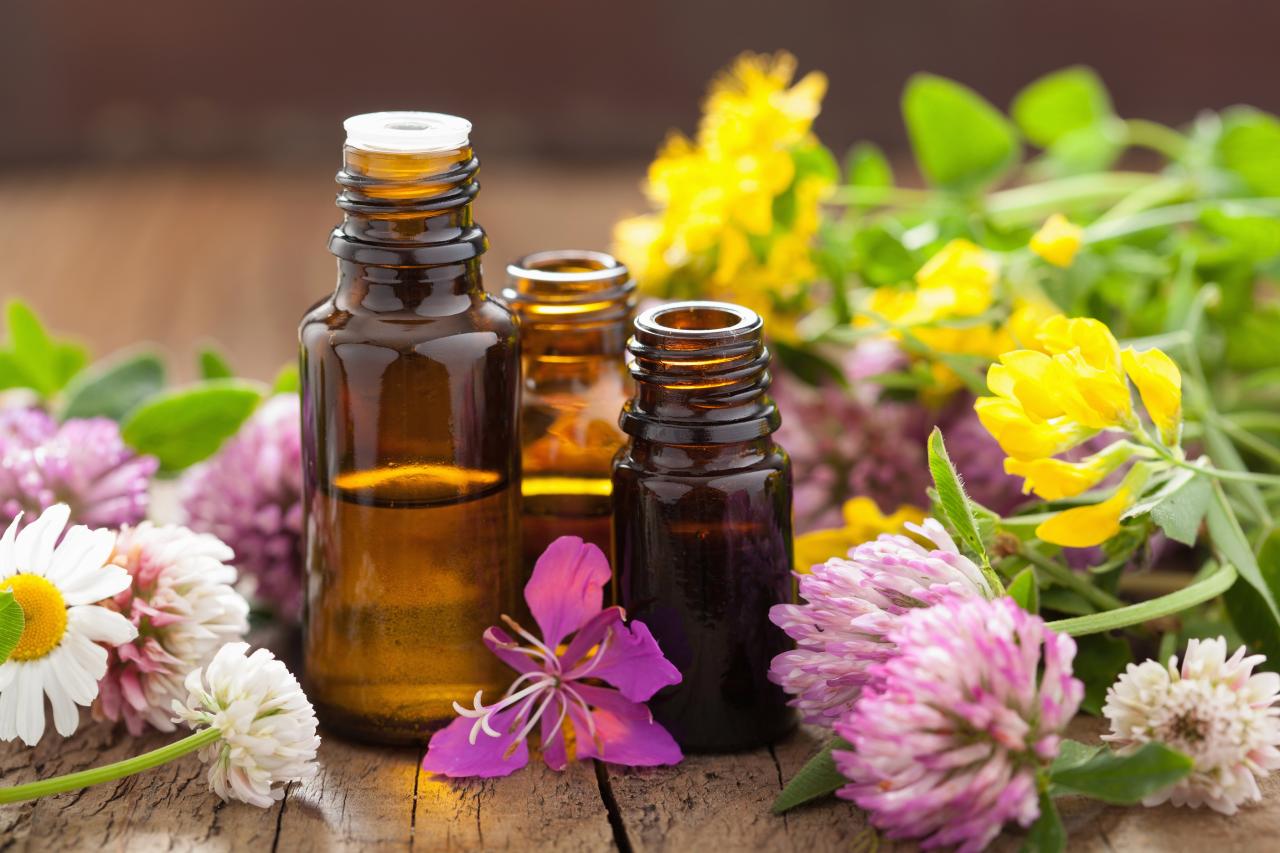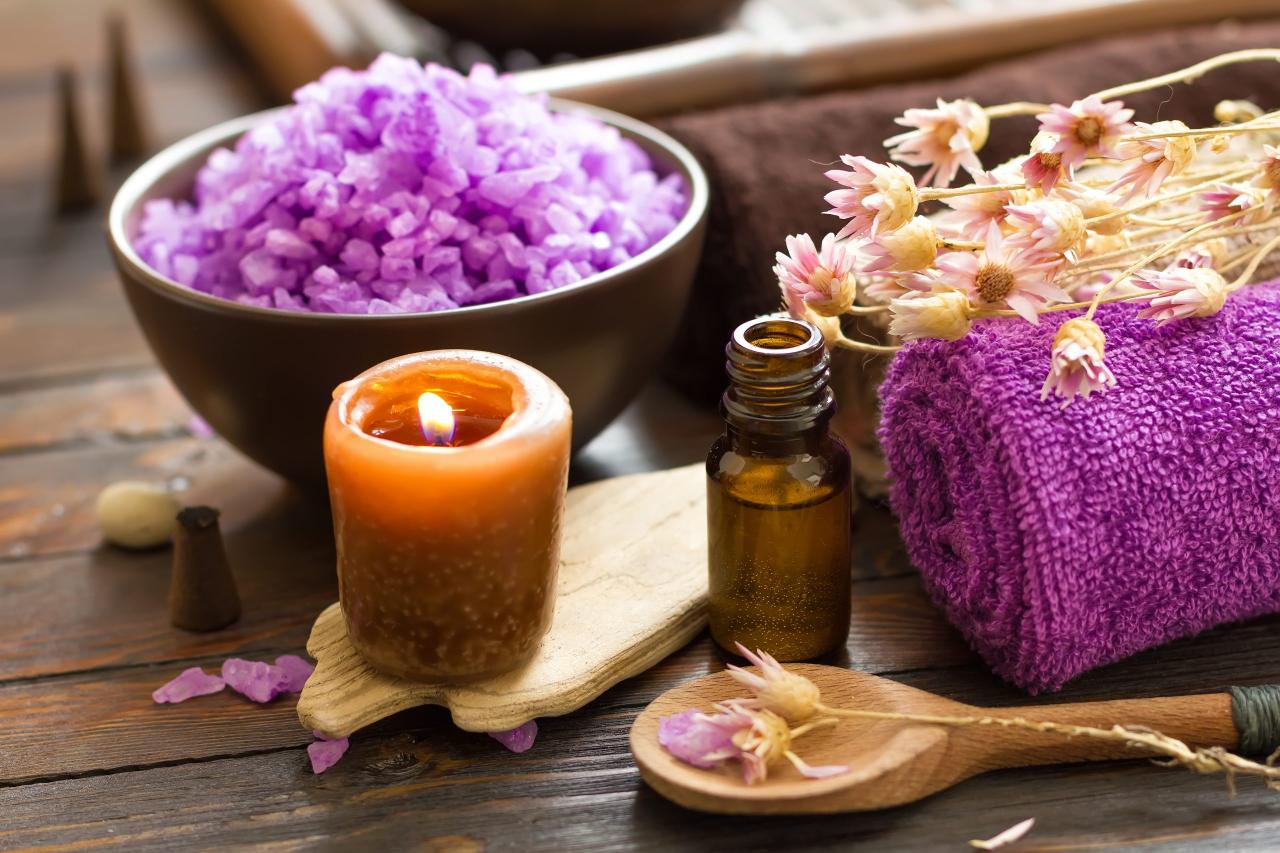In the realm of holistic wellness, aromatherapy stands as a beacon of fragrant delight, offering a symphony of scents that tantalize the senses and nurture the body and mind. Let us embark on a journey to unveil the essence of aromatherapy, exploring its ancient roots, therapeutic properties, and myriad applications.
From the incense-filled temples of ancient Egypt to the aromatic gardens of medieval Europe, aromatherapy has woven its way through the tapestry of human history, leaving an enduring legacy of healing and well-being.
History and Origins of Aromatherapy

Aromatherapy, the practice of using essential oils and aromatic compounds for therapeutic purposes, has a rich and ancient history. Its roots can be traced back to various ancient civilizations, where it was used for both medicinal and spiritual purposes.
Ancient Egypt
The ancient Egyptians were among the first to use aromatherapy. They believed that scents had a profound impact on the body and mind, and they incorporated aromatic substances into their religious rituals, cosmetic practices, and medical treatments. Egyptians used essential oils such as myrrh, frankincense, and lotus for embalming, as well as for treating a variety of ailments, including headaches, skin conditions, and respiratory problems.
Ancient Greece
The ancient Greeks also recognized the therapeutic benefits of aromatherapy. Hippocrates, the “Father of Medicine,” recommended the use of essential oils for a wide range of health conditions, including digestive problems, menstrual cramps, and wounds. The Greek physician Galen developed a system of aromatherapy that involved inhaling the vapors of essential oils to treat various ailments.
Ancient Rome
The ancient Romans adopted many of the aromatherapy practices of the Greeks and Egyptians. They used essential oils in baths, massages, and perfumes, and they believed that certain scents could promote relaxation, enhance mood, and improve overall health. The Roman physician Pliny the Elder wrote extensively about the medicinal uses of essential oils, and he recommended their use for treating a variety of conditions, including headaches, fatigue, and skin infections.
Essential Oils and Their Therapeutic Properties

Essential oils are concentrated plant oils that retain the natural smell and flavor of their source. They are extracted through various methods, such as distillation, cold pressing, and solvent extraction. These oils possess a wide range of therapeutic properties, making them valuable in aromatherapy and other holistic practices.
Extraction Methods of Essential Oils
The extraction method significantly influences the quality and yield of essential oils. Here are the common methods used:
- Steam Distillation:Steam is passed through plant material, carrying the volatile compounds into a condenser, where they are collected as essential oil.
- Cold Pressing:Citrus fruits are pressed to release their essential oils, which are then separated from the juice.
- Solvent Extraction:A solvent, such as alcohol or hexane, is used to dissolve the essential oils from the plant material. The solvent is then evaporated, leaving behind the concentrated oil.
Chemical Composition and Properties of Essential Oils
Essential oils are composed of various chemical compounds, including terpenes, esters, aldehydes, and ketones. These compounds give essential oils their characteristic scents and therapeutic properties.
The chemical composition of an essential oil determines its therapeutic properties. For example, oils rich in terpenes, such as limonene and pinene, have uplifting and stimulating effects, while oils high in esters, such as linalool and geraniol, are calming and relaxing.
Methods of Aromatherapy Application
Aromatherapy can be applied in various ways to suit individual preferences and therapeutic needs.
Incorporation into Massages
Aromatherapy massages involve blending essential oils with carrier oils, such as almond or jojoba oil, to create a therapeutic massage blend. The essential oils are absorbed through the skin and provide their therapeutic effects, such as relaxation, pain relief, or invigorating effects.
Baths
Adding a few drops of essential oils to a warm bath can create a relaxing and rejuvenating experience. The steam helps disperse the essential oils throughout the bathroom, allowing for inhalation and absorption through the skin. Epsom salts can be added to enhance the therapeutic benefits.
Diffusers
Diffusers are devices that disperse essential oils into the air. They can be used to create a specific ambiance or provide therapeutic benefits throughout a room. There are various types of diffusers, including ultrasonic, heat, and nebulizing diffusers, each with its own advantages and methods of use.
Creating Aromatherapy Blends
To create your own aromatherapy blends, consider the following tips:
- Start with a few drops of essential oils and gradually adjust the amounts to suit your preferences.
- Experiment with different combinations of oils to create unique blends.
- Consider the therapeutic properties of each oil when creating a blend.
- Store your blends in dark glass bottles to preserve their potency.
Benefits and Applications of Aromatherapy
Aromatherapy is a holistic approach that harnesses the therapeutic properties of essential oils to enhance well-being. Its benefits range from stress relief and improved sleep to pain management.
Applications in Healthcare
- Pain Management:Studies have shown that aromatherapy using lavender or peppermint oil can effectively reduce pain intensity in conditions like headaches and osteoarthritis.
- Nausea Relief:Inhaling ginger or peppermint essential oil can alleviate nausea and vomiting, particularly in pregnant women or during chemotherapy.
- Respiratory Conditions:Eucalyptus or tea tree oil can help clear nasal congestion and improve breathing in respiratory ailments.
Applications in Beauty and Wellness
- Skin Care:Aromatherapy oils like tea tree, lavender, or rosemary can be incorporated into skincare products to combat acne, wrinkles, and inflammation.
- Hair Care:Rosemary or lavender oil can promote hair growth and reduce dandruff when added to shampoos or conditioners.
- Mood Enhancement:Diffusing citrus or floral essential oils can uplift mood, reduce stress, and promote relaxation.
Case Studies
A study published in the journal “Complementary Therapies in Medicine” found that inhaling lavender oil for 30 minutes significantly reduced anxiety and improved sleep quality in participants.
Another study in the journal “Evidence-Based Complementary and Alternative Medicine” demonstrated that applying peppermint oil to the temples reduced tension headaches by 50% within 15 minutes.
Safety Considerations and Precautions
Aromatherapy, like any other therapeutic approach, requires responsible use to maximize benefits while minimizing risks. Understanding potential contraindications and adhering to proper dilution and dosage guidelines is crucial for safe and effective aromatherapy practices.
Potential Risks and Contraindications
While essential oils are generally safe when used appropriately, certain individuals may experience adverse reactions. Pregnant women, individuals with underlying health conditions, and those taking certain medications should consult with a qualified healthcare professional before using aromatherapy. Some oils, such as pennyroyal, thuja, and wintergreen, are known to be toxic and should be avoided.
Importance of Proper Dilution and Dosage
Essential oils are highly concentrated and can cause skin irritation or other adverse effects if applied undiluted. Always dilute essential oils in a carrier oil, such as jojoba, almond, or coconut oil, before applying them to the skin. The recommended dilution ratio varies depending on the oil and the intended use.
It’s important to follow specific guidelines or consult with an experienced aromatherapist for safe and effective use.
Guidelines for Safe and Effective Aromatherapy Practices
- Use only high-quality, 100% pure essential oils from reputable sources.
- Always dilute essential oils in a carrier oil before applying them to the skin.
- Avoid using essential oils internally unless under the guidance of a qualified healthcare professional.
- Do not apply essential oils to broken or irritated skin.
- If skin irritation occurs, discontinue use and consult with a healthcare professional.
- Store essential oils in a cool, dark place away from children and pets.
By adhering to these safety considerations and precautions, individuals can enjoy the therapeutic benefits of aromatherapy while minimizing potential risks.
Concluding Remarks

Aromatherapy, with its fragrant embrace, invites us to rediscover the profound connection between scent and well-being. Its transformative power lies in its ability to soothe the soul, alleviate ailments, and awaken our senses to the beauty of nature. As we continue to delve into the world of aromatherapy, may we embrace its healing potential and find solace in its fragrant embrace.